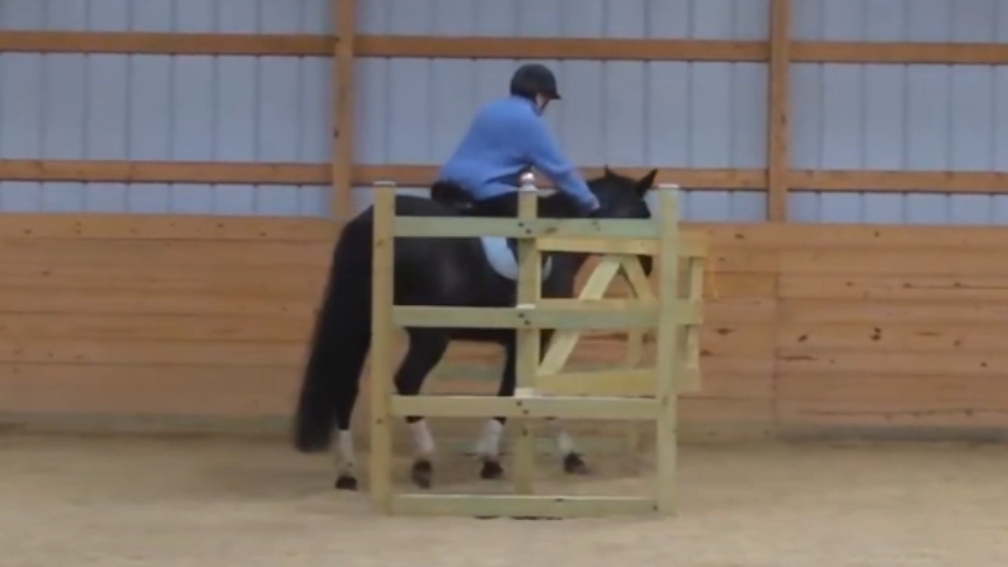Simplify the Gate could be approach the gate, go through, close it.
That's even less helpful than the rule book. And not helpful for our horse.
How did I end up spending an hour writing about this?
I was thinking about the name Working Equitation Simplified and what simplified meant.
Bear with me, I'll get back to the Gate.
All definitions said 'to make something easier or more simple to do, or understand'.
But some also said simplified meant 'without small details, not complicated or involved'.
Simplified as I've intended it, seemed incongruent with that definition.
In The Working Equitation Mastery online course, I've done the opposite. I have added many small details to make it less complicated for both you, and your horse.
It's not about just getting the gate done, but doing it well, with control and relaxation.
Breaking it down to simplify the gate:
There are 5 maneuvers required just getting to the gate, into a position to unlatch it. Transition, walk, turn laterally, move forward or back, halt and show immobility,
Passing through the gate has various maneuvers. It depends whether you are going forwards or backwards. And it's affected by whether your horse steps exactly where you directed them to.
Those maneuvers can include Turn on the forehand, Turn on the haunches, Sidepass and Reinback. These are also taught in multiple steps in their own lessons (to simplify them).
When training, don't think of it as just 'the gate obstacle.
They are many single tasks, that when put together will enable you to 'perform' the gate obstacle.
This also introduces an important training concept.
Do not pattern your horse to the gate.
You need to control the direction and size of each step your horse makes.
You decide how long to wait between each step.
And you decide if 3 or 6 or 8 steps in, you are going to change your mind and go home.
In real life, this is how a gate needs to be worked.
A horse that just assumes to go through and do the pattern itself risks losing the cows. Either because they either didn't wait at the right time, or didn't move the right direction or amount.
Yes, in a show you are to flow through without hesitation. This will come with training.
And the extra tips in the Secret to Making Obstacles Flow!
When you know that you can direct each step and length of pause, then your pauses can be so short no one sees them.
But don't forget to practice at home with different length pauses.
Change your mind, and only occasionally ride the complete gate.
Don't pattern your very smart horse.
Looking for more info on training your horse to do the Gate correctly and with relaxation?
Check out this very special offer
https://we-simplified.com/wp-gate
You CAN learn how to improve your horse's skills from online courses and tips such as these.
But only if you implement.
So when you read my articles write down the steps as a reminder for what you're going to try in your next ride.
Take them to the barn and try them out.
Come on back when you're done and let me know how it went.


love your step by step approach
Thank you.
I have a related course available right now that you might be interested in
https://we-simplified.com/wp-gate
Do you have plans on how to make the above gate
No sorry, I do not.